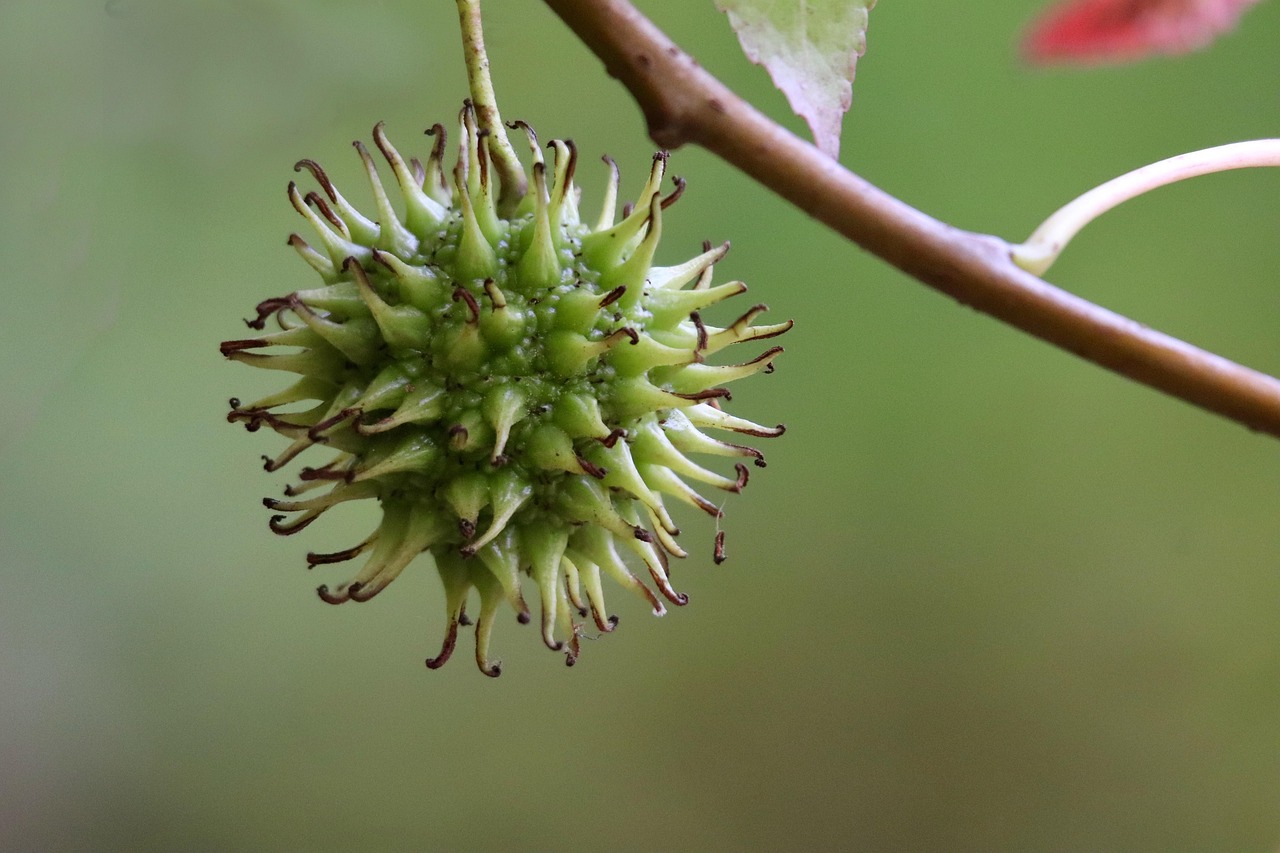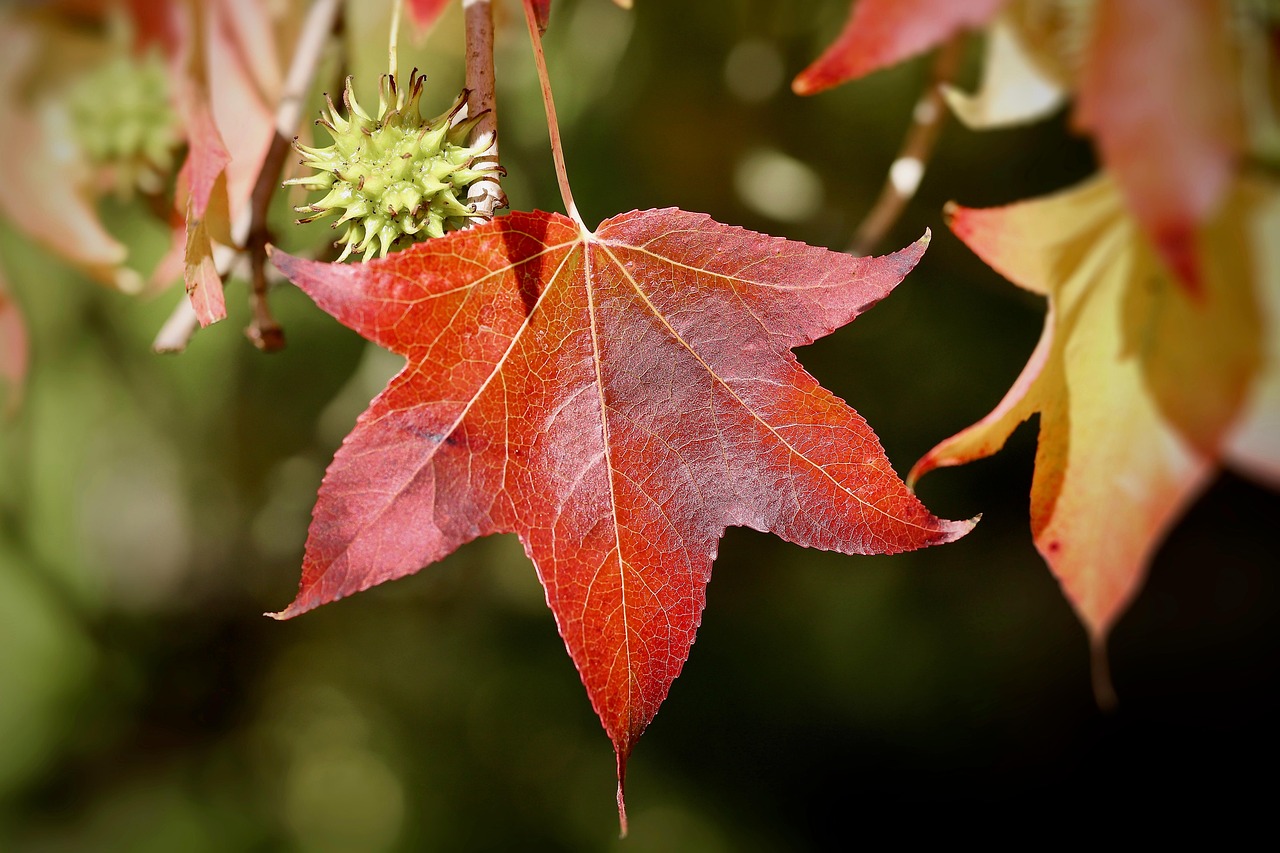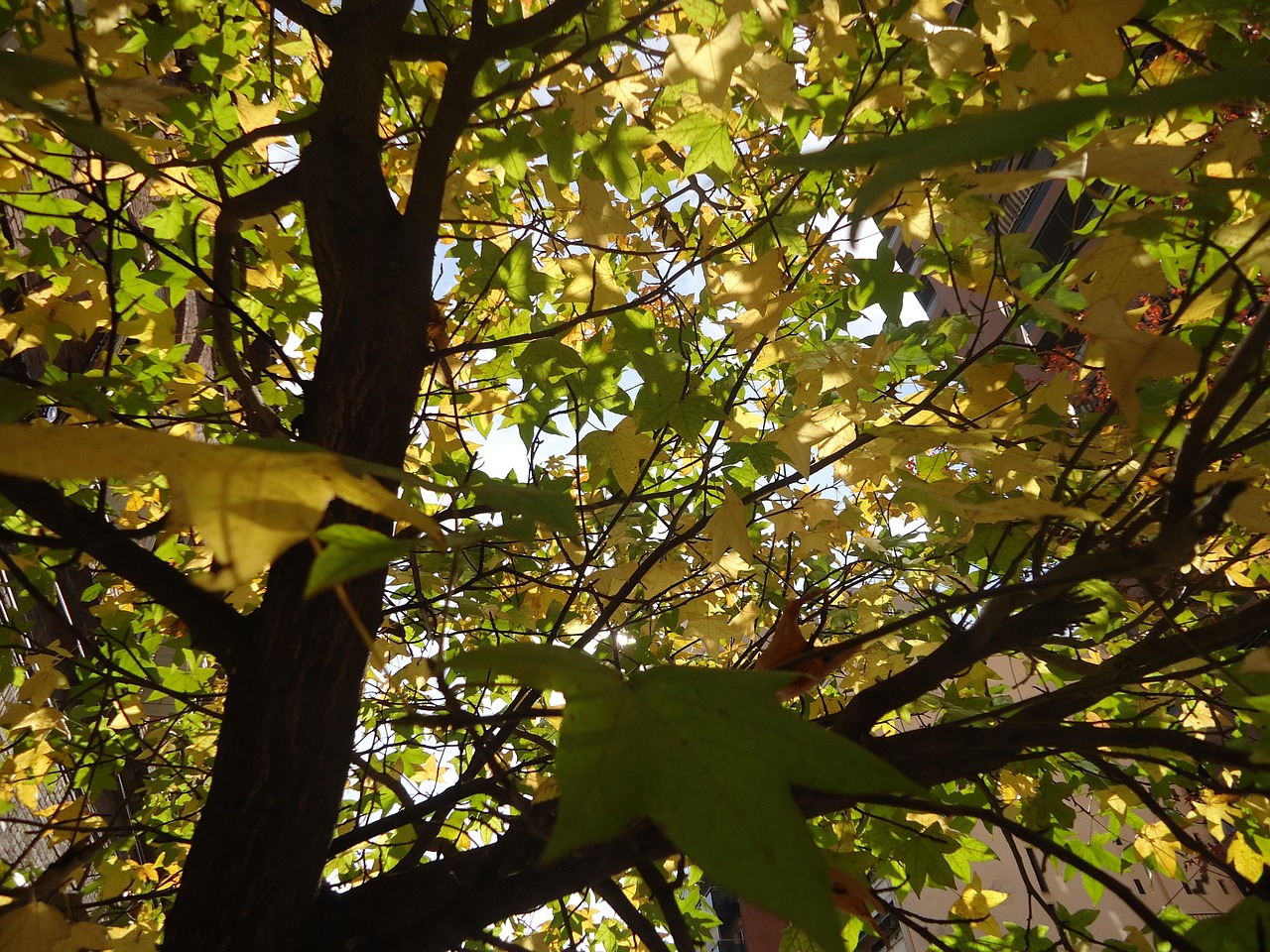The Sweetgum tree, known scientifically as Liquidambar styraciflua, typically exhibits a growth rate of 1 to 2 feet per year under optimal conditions. This tree can reach heights of 60 to 100 feet and thrives in well-drained soils.
Introduction to the Sweetgum Tree

The Sweetgum tree is a deciduous tree native to the southeastern United States. With its distinctive star-shaped leaves and vibrant fall colors, it is often sought after for landscaping purposes. Sweetgums can be found in a variety of environments, ranging from wet lowlands to dry uplands. Their adaptability and unique aesthetic make them a popular choice among homeowners and urban planners alike.
Understanding the growth rate and speed of the Sweetgum tree is essential for anyone considering planting one. This knowledge helps in planning the landscape, ensuring adequate spacing, and predicting how the tree will develop over time. The Sweetgum is known for its rapid growth under ideal conditions, contributing to its popularity.
Growth Rate Overview
The growth rate of the Sweetgum tree can be influenced by several factors. These include soil quality, water availability, sunlight exposure, and overall climate conditions. Typically, young Sweetgum trees will grow at a faster rate compared to older trees. Below are some key points that characterize the growth of the Sweetgum tree:
| Growth Stage | Growth Rate (Feet per Year) | Typical Height at Maturity |
|---|---|---|
| Young Tree | 2 – 3 | 20 – 30 feet |
| Mature Tree | 1 – 2 | 60 – 100 feet |
As shown in the table above, young Sweetgum trees can achieve a growth rate of up to three feet per year if they are provided with ideal growing conditions. As they mature, this growth rate typically decreases to about one to two feet per year. This gradual change is common among many tree species.
Factors Affecting Growth Rate
Several environmental factors play a critical role in determining how quickly a Sweetgum tree grows. These include:
- Soil Quality: Well-drained soil rich in organic matter promotes faster growth.
- Water Availability: Consistent moisture levels are essential, particularly during the growing season.
- Sunlight Exposure: Full sun conditions tend to enhance growth rates significantly.
- Temperature: Sweetgums prefer warm climates and may struggle in colder regions.
By ensuring that these factors are met, gardeners can encourage healthy growth in their Sweetgum trees. This knowledge is crucial for anyone looking to plant or maintain these trees effectively.
In summary, understanding the typical growth rate and speed of the Sweetgum tree allows individuals to make informed decisions regarding landscaping and tree care. With proper attention to their needs, these trees can thrive and contribute beauty and shade to any environment.
Sweetgum Tree Characteristics
The Sweetgum tree, known for its unique appearance and ecological importance, has several characteristics that make it noteworthy. Understanding these features can help in appreciating its role in the landscape and the environment. Below are some of the key characteristics of the Sweetgum tree:
- Leaf Structure: The leaves of the Sweetgum are star-shaped, typically with five to seven lobes. This distinct shape not only makes the tree visually appealing but also aids in photosynthesis.
- Fall Foliage: In autumn, Sweetgum leaves change to vibrant shades of yellow, orange, and red, making them a popular choice for seasonal displays.
- Bark Texture: The bark is generally gray-brown and has a rough, corky texture. As the tree matures, it develops deep fissures that enhance its rugged appearance.
- Fruit Production: The tree produces spiky, round fruit balls that can be a nuisance when they fall. However, they provide food for various wildlife species.
Preferred Growing Conditions
For optimal growth, the Sweetgum tree thrives in specific environmental conditions. Understanding these preferences can assist gardeners and landscapers in creating suitable habitats for these trees. The following are preferred growing conditions for Sweetgum trees:
- Soil Type: Sweetgums prefer moist, well-drained soils that are rich in organic matter. Sandy loam or clay loam soils are ideal.
- Sunlight Requirements: These trees flourish in full sun, requiring at least six hours of direct sunlight daily to grow vigorously.
- Water Needs: While they tolerate drought conditions once established, Sweetgum trees grow best with consistent moisture during the growing season.
- Climate Zones: Sweetgum trees are hardy in USDA zones 5 through 9, making them suitable for a variety of climates.
Pests and Diseases
Like many trees, the Sweetgum is susceptible to certain pests and diseases. Being aware of these issues allows for better management and care. Some common pests and diseases affecting Sweetgum trees include:
- Aphids: These small insects can cause leaf curl and may lead to sooty mold if not managed properly.
- Scale Insects: Scale insects can weaken the tree by sucking sap from the leaves and stems.
- Leaf Spot: Fungal infections can cause brown spots on leaves, leading to premature leaf drop.
- Cankers: These are lesions on the bark that can hinder nutrient flow and may require pruning to manage.
Regular monitoring and proper care are essential to prevent these issues. Early detection can make a significant difference in the health of the tree.
Maintenance Tips for Sweetgum Trees
Caring for Sweetgum trees involves several maintenance practices that ensure their health and longevity. Here are some essential maintenance tips:
- Watering: Ensure newly planted trees receive adequate water until they establish roots. Deep watering is preferable over frequent shallow watering.
- Fertilization: Apply a balanced fertilizer in early spring to promote healthy growth. Follow package instructions for application rates.
- Pruning: Prune young trees to develop a strong structure. Remove any dead or diseased branches promptly to prevent further issues.
- Pest Control: Implement integrated pest management strategies, such as introducing beneficial insects or using organic pesticides as needed.
Caring for Sweetgum trees requires attention and dedication but rewards homeowners with beautiful foliage and shade. Proper maintenance ensures that these trees thrive throughout their lifespan.
Cultural Significance
The Sweetgum tree holds cultural significance in various regions where it grows. It is often associated with traditional landscaping and has been used historically for various purposes:
- Lumber Production: The wood of the Sweetgum is used for furniture and cabinetry due to its attractive grain and durability.
- Ecological Value: The tree provides habitat and food for many species of birds and insects, contributing to local biodiversity.
- Cultural Symbolism: In some cultures, the Sweetgum tree is seen as a symbol of resilience and strength, thriving in diverse environments.
This cultural appreciation further enhances the value of planting Sweetgum trees in community spaces and private gardens.

Sweetgum Tree Uses and Applications

The Sweetgum tree is not only valued for its aesthetic appeal but also for its practical uses. Its wood and other features have various applications, making it a versatile tree in both urban and rural settings. Below are some of the primary uses of the Sweetgum tree:
- Wood Products: The timber of the Sweetgum tree is utilized in the production of furniture, cabinets, and flooring. Its fine grain and durability make it a popular choice among woodworkers.
- Medicinal Uses: Historically, the gum from the Sweetgum tree has been used in traditional medicine. It has been employed for its anti-inflammatory properties and as an antiseptic.
- Landscaping: Sweetgum trees are often planted in parks and residential areas for shade and ornamental beauty. Their vibrant fall colors add significant visual interest to landscapes.
- Wildlife Habitat: The tree serves as a habitat for various wildlife species, providing food and shelter. Birds, insects, and small mammals benefit from the tree’s ecosystem.
Environmental Benefits of Sweetgum Trees
The Sweetgum tree contributes significantly to the environment, offering several ecological benefits. Understanding these benefits can help emphasize the importance of planting and preserving these trees:
- Air Quality Improvement: Sweetgum trees help filter pollutants from the air. Through photosynthesis, they absorb carbon dioxide and release oxygen, improving overall air quality.
- Soil Erosion Control: The extensive root system of the Sweetgum tree helps stabilize soil, preventing erosion. This is particularly beneficial in areas prone to heavy rainfall.
- Biodiversity Support: By providing food and habitat, Sweetgum trees support a diverse range of wildlife. This biodiversity is crucial for maintaining healthy ecosystems.
- Carbon Sequestration: Like many trees, Sweetgums sequester carbon dioxide from the atmosphere, helping to combat climate change.
Challenges and Considerations When Planting
While the Sweetgum tree offers numerous advantages, there are challenges and considerations to keep in mind when planting these trees. Awareness of these factors can lead to better decision-making:
- Fruit Debris: The spiky seed balls produced by Sweetgum trees can create a mess on lawns and driveways. Some homeowners may find this undesirable.
- Space Requirements: Sweetgums can grow quite large, requiring ample space for their canopy and root system. Careful planning is necessary when planting near buildings or other trees.
- Invasive Potential: In certain regions, Sweetgum trees can become invasive if not managed properly. Their ability to spread quickly may outcompete native plants.
- Pest Management: As previously mentioned, Sweetgum trees can be susceptible to various pests and diseases. Regular monitoring and maintenance are essential for healthy growth.
Planting Tips for Sweetgum Trees
If you decide to plant a Sweetgum tree, following some best practices can enhance its chances of thriving. Here are several tips to consider:
- Select the Right Location: Choose a site that receives full sunlight and has well-drained soil. Avoid low-lying areas where water may accumulate.
- Spacing: Allow enough space between trees and other plants. This will ensure that each tree has enough room to grow without competition.
- Prepare the Soil: Before planting, enrich the soil with organic matter to improve drainage and nutrient availability.
- Watering Schedule: Newly planted trees require regular watering until established. Monitor soil moisture levels and adjust accordingly.
Implementing these planting tips can result in healthy Sweetgum trees that flourish in your landscape.
Sweetgum Trees in Urban Settings
The adaptability of the Sweetgum tree makes it suitable for urban settings. These trees can provide several advantages in city environments:
- Shade Provision: Sweetgum trees offer significant shade, which can help reduce urban heat islands and lower energy costs for nearby buildings.
- Aesthetic Appeal: Their stunning fall foliage enhances the beauty of urban landscapes, making them a favored choice for city planners.
- Noise Reduction: Trees like the Sweetgum can act as sound barriers, helping to mitigate noise pollution in busy urban areas.
By incorporating Sweetgum trees into city planning, urban areas can benefit from improved aesthetics, environmental health, and community well-being.
Sweetgum Tree Varieties
While the standard Sweetgum tree (Liquidambar styraciflua) is the most commonly known variety, there are several cultivars and related species that offer unique characteristics. Understanding these varieties can help individuals select the best option for their landscape needs:
- ‘Rotundiloba’: Known as the roundleaf Sweetgum, this variety has broader leaves and is often favored for its compact growth habit. It is suitable for smaller gardens.
- ‘Slender Silhouette’: This cultivar has a more upright growth form, making it ideal for tight spaces. It retains the classic Sweetgum characteristics but grows taller and narrower.
- ‘Burgundy’: This variety is noted for its deep burgundy fall color. It adds a spectacular visual element to gardens during autumn.
- ‘Golden Spirit’: A unique cultivar with golden-yellow leaves, it provides a striking contrast in the landscape, especially in spring and summer.
Choosing the right variety of Sweetgum tree can enhance the visual appeal of your landscape while providing the same benefits as the traditional species.
Sweetgum Trees and Climate Change
As climate change impacts ecosystems worldwide, trees like the Sweetgum play a crucial role in mitigating some of these effects. Their ability to sequester carbon helps combat rising CO2 levels in the atmosphere. Additionally, by providing shade and cooling urban areas, they contribute to lowering temperatures and reducing energy consumption.
Moreover, Sweetgum trees are resilient and can adapt to changing environmental conditions. Their deep root systems allow them to access water during droughts, making them a valuable species in times of climate variability. Planting Sweetgum trees can be part of broader strategies aimed at enhancing urban forestry and climate resilience.
Community Engagement and Education
Engaging comm

unities in tree planting initiatives involving Sweetgum trees can foster a sense of stewardship and environmental responsibility. Educational programs highlighting the benefits of these trees can raise awareness about their ecological contributions and promote sustainable practices. Schools, local governments, and non-profit organizations can collaborate to implement tree planting campaigns that involve residents.
Such initiatives not only improve urban greenery but also create opportunities for community bonding and education about local ecosystems. Workshops on tree care, maintenance, and environmental impact can empower individuals to take an active role in caring for their urban landscape.
Conclusion
The Sweetgum tree is a remarkable species that offers numerous benefits, from its striking appearance and rapid growth to its significant environmental contributions. Understanding its growth rate, preferred conditions, and potential challenges allows for informed decisions when planting and caring for these trees. The versatility of the Sweetgum makes it suitable for various settings, including residential gardens and urban landscapes.
Cultivating Sweetgum trees not only enhances the beauty of our surroundings but also plays a vital role in supporting biodiversity, improving air quality, and combating climate change. By incorporating these trees into community planning and individual gardens, we can create healthier, more vibrant environments for future generations. The Sweetgum tree stands as a testament to nature’s resilience and beauty, worthy of appreciation and protection.
